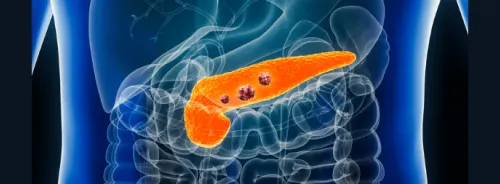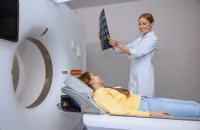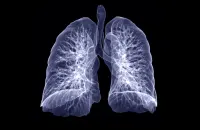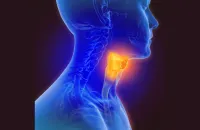Pulmonary embolism (PE) is a significant cardiovascular-related cause of death, often detected incidentally during imaging studies like chest CTs for other reasons. Symptoms are vague, making diagnosis challenging. PE can complicate various conditions and procedures. Abdominal CTs, although not primarily for lung evaluation, can incidentally capture PEs, especially in the lower lung regions. However, they may be overlooked, especially if not carefully examined. AI algorithms show promise in improving PE detection, with studies demonstrating their efficacy in chest CTs. Implementing AI has increased PE detection rates and reduced missed diagnoses, particularly in cancer patients. However, research on AI's clinical use in abdominal CTs is scarce. A recent study published in Radiology Advances aims to evaluate iPE detection rates, characteristics, and the impact of AI implementation in abdominal CTs.
A Retrospective Multicenter Study in Sweden
A multicenter retrospective cross-sectional study was conducted in three hospitals in Sweden, approved by the Swedish Ethical Review Authority. Informed consent was waived due to the study's retrospective nature. Abdominal CT scans from adult patients between August 2019 and January 2021 (pre-AI implementation) or August 2021 and January 2023 (post-AI implementation) were included. Radiology reports mentioning embolism-related terms were manually confirmed for incidental pulmonary embolism (iPE). Patients with iPE already reported in prior studies or with concurrent chest CTs were excluded. CT scans were performed using specific protocols, including contrast enhancement and automatic bolus tracking. An AI solution, Aidoc BriefCase, was used for iPE and PE detection and triage. The AI algorithms were trained on diverse CT scans and automatically analysed images uploaded to the cloud. Results were displayed separately from the PACS for radiologists' immediate review. There was no standardised policy for further evaluation with CTPA; recommendations were at the radiologist's discretion.
AI’s Positive Predictive Value Confirmed
The study encompassed 8026 examinations before AI integration and 8765 afterwards. It meticulously examined the inclusion and exclusion criteria, elaborated in Figure 1, and delineated the demographic particulars of the study population in Table 1. Notably, the mean age of patients before AI adoption was 63.6 years, with 53.6% being female. Post-AI integration, the mean age slightly decreased to 63.2 years, with 57% female representation. Following AI implementation, there were 54 reported iPE cases, among which two were AI-positive but later confirmed as false positives through either CTPA or retrospective image review. In contrast, one out of 11 cases before AI adoption was found to be false positive post-CTPA.
AI demonstrated an ability to identify 46 out of 50 reported iPE cases, yielding a positive predictive value (PPV) of 86.8%. Visual exemplars of AI-detected iPE cases were illustrated in Figures 3 and 4. Conversely, seven false positive cases were detected, attributed to streak artefacts and slightly prominent peribronchovascular interstitium. Notably, four iPE cases were falsely negative in AI detection, with no apparent cause identified. During a retrospective image review, three of the seven AI false positive cases were later categorised as AI true positives. Notably, attenuation values in the most proximal visualised pulmonary vessels significantly differed between iPE-positive and -negative cases.
In a separate analysis involving manual review of 1000 randomly selected cases, 15 iPE cases were discovered. AI correctly identified 40% of these cases without generating any false positives, resulting in a sensitivity of 40%, specificity of 100%, PPV of 100%, and negative predictive value of 99%. It's noteworthy that while five out of six AI true positive cases were duly reported in radiology reports, none of the AI false negatives were reported. This underlines a potential gap in the reporting process. The study's findings underscore the utility of AI in detecting iPE. However, it also highlights areas for improvement and potential challenges in its application, particularly in discerning false negatives and enhancing reporting practices.
Insights and Challenges
In abdominal CT scans, incidental pulmonary embolisms (iPEs) can be overlooked due to inadequate assessment of the pulmonary arteries and suboptimal contrast phases. In a study across three radiology departments in Region Halland, Sweden, implementing an AI algorithm significantly improved iPE detection rates (0.57% vs. 0.12%). Patient and iPE characteristics remained similar, with most iPEs being segmental or proximal. The AI detected 92% of reported cases with a PPV of 87%. In a manual review, iPE prevalence was 1.7%, with AI demonstrating 40% sensitivity and 100% specificity. Despite improvements, AI sensitivity for iPE in abdominal CT was lower than in chest CT studies using different contrast phases. The study highlights challenges, including the risk of false positives, the need for careful assessment of pulmonary arteries, and the heterogeneous nature of patients with iPE. Recommendations for further evaluation with CTPA depend on clinical context and PE extent. However, there are limitations, including potential underestimation of iPE detection rates and difficulty in evaluating scans not analysed by AI. Implementing AI for iPE detection in abdominal CTs enhances detection rates with few false positives but requires careful interpretation and consideration of clinical context.
Source: Radiology Advances
Image Credit: iStock









